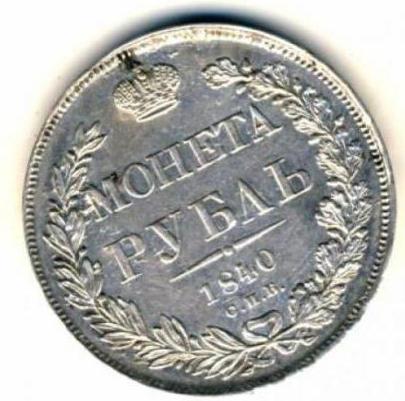In the 18th century, the question of the coinage of a new 20 kopecks coin was raised for the first time. The reason for this was the "big distance" between already existing coins of 50 kopecks and 10 kopecks.
A new coin was released into circulation in 1764,when Catherine II was on the throne. Then the material for the manufacture of silver served 750 samples. In the Soviet years, it was minted from silver 500, up to 1931. Further, nickel silver was used for minting coins with a nominal value of 20 kopecks. 1961 is the year of monetary reform, therefore, the appearance of the monetary unit was changed, and the material for its manufacture began to serve as a copper-nickel alloy. In Soviet times, minting of this nominal value was made almost annually.
Detailed description
The economic transformations carried out in the country had an impact on the appearance of monetary units. New samples were approved for each nominal. Thus, a coin of 20 kopecks appeared in 1961.

It was made of copper-nickel alloy andweighed 3.4 grams. Its diameter was 21.8 millimeters, and the thickness - one and a half millimeters. On the obverse in the upper part in the center is a five-pointed star. It is slightly convex and has several faces. Under it is the image of the globe. It serves as a kind of background for the well-known symbol of the unity of the workers and peasants - the crossed sickle and hammer. Frame 2 beams of ears, tied along the length of the tape. Below under the place of their connection is placed the abbreviation of the name of the state "USSR". The reverse of a 20 kopeck coin 1961 consists of four parts:
- The number "20" is the size of the nominal.
- The word "kopek" means a unit of measurement.
- The numbers "1961" is the year of publication.
- Right and left around the circumference there are one wheat spikelet, each of which smoothly turns into an oak branch containing 2 leaves.
In those years, 20 kopecks in 1961 were very popular, and finding them was not difficult. The reason for this was a large circulation due to the ongoing state reform.
Varieties of coins
Все образцы 20 копеек 1961 года, находящиеся в то time in everyday life, basically, were of two kinds. The difference consisted in the number of lines located between two oak leaves, located next to the letters "k" in the word "kopecks". In one embodiment, these strokes were “two”, and in the other already “three”. They did not give any fundamental differences. Only one specialist could distinguish one from another. At present, these coins have no special value, since they were produced in a rather large circulation. But in those years there were more rare samples. For example, at one time, on the obverse of a twenty-pound coin, the unusual coat of arms was minted. His appearance corresponded to the image on the nominal "3 pennies". This version is a rarity. In addition, the mints have released a very small circulation of twenty-twenty trifles from nickel silver. Such a coin weighed 3.6 grams. This metal was used previously, but in 1961 was replaced by a lighter alloy. There are also very rare specimens, which, in fact, are considered "production errors".

Price difference
Многие, у кого на руках сохранилась монета 20 kopecks 1961, want to sell it. But it's not that simple. First, you must consider the appearance of a specific instance. If this is a typical sample, then its realization will not give a big profit. Depending on the quantity and demand, a coin can now cost from 20 to 200 rubles. Another thing is “entanglement,” that is, products that contain various defects and inconsistencies. So, the owners of coins minted on blanks for 15 or 3 kopecks can receive up to 3000-4000 rubles at auction. Of particular interest to coin collectors is coin marriage. For example, a copy of 20 kopecks, made with a visible offset, when selling is estimated at 5,000 rubles. The category of "particularly rare specimens" also included one-sided coinage, in which the image of the obverse is completely absent. There is also an instance made for the test, in which the size of the figures is somewhat reduced. But to get such a coin is almost impossible.

Of the most famous options can be notedthe sample that received the conditional name "without a ledge." In it the external comb around the circumference does not have a characteristic protrusion. This feature is also appreciated by collectors.










